|
Preparation of the Wood |
|||
|
It is said that there three things essential to a good finish on a musical instrument............"Preparation, preparation, preparation." Starting with instruments whose finish is well beyond rescue, there are certain steps to go through before refinishing, though I have to say I have come across instruments whose 're-finish' was applied not only over the old battered finish, but also over the tuners, tailpiece and fingerboard!! Yeuk! What will I need? Typically you will need the following; sandpaper (anti-clogging type) 80, 120, 240, 320, 400, wet and dry paper; 600, 800, 1000, 1500; scraper; large piece of net curtain; cork sanding block; face mask; protective gloves. |
|||
| Removing the old finish | |||
|
Step 1: A re-varnish involves scraping the old varnish off using a 'cabinet scraper'... a very sharp blade held vertically to the surface. Mine are a series of sharpened cheap craft knives. A mask is worn because of the noxious nature of some of these original substances. Here the varnish is stained cracked and in some places completely worn away leaving the wood dirty and greasy. |
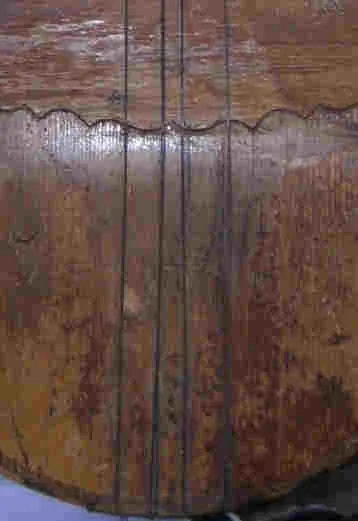 |
This is more typical; tired, scratched and
with a split that will necessitate some sanding, which will remove all
remaining varnish around the crack area.
You must assess the level of damage to the varnish and decide between a re-finish, and touching up. If possible, do this outside, it makes a mess, and some varnishes are toxic if inhaled. |
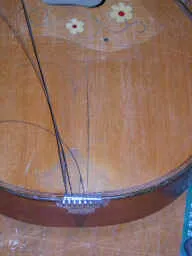 |
|
Sanding and Polishing |
|||
|
Step 2: Scrape Starting with a scraper, moving in the direction of the grain, I remove the old varnish. Here I have worked on only half of the top to illustrate the difference before and after cleaning and polishing. |
Step 3: Sand Once the old varnish is removed, I then sand the top with progressively finer sandpaper, starting with 120 and going up to 400 in large steps, again working along the grain. |
Step 4: Polish
Once you get to 600 or 1200 grade, you are essentially polishing ready for the varnish. If I have cracks to repair, I leave the sanding and polishing until after the repair. |
Step 5: Burnish
Here, the original half done instrument has been finished. The final step is to use a cloth to 'burnish' the wood. I tend to use stiff tapestry fabric, but lace curtain material will also do. |
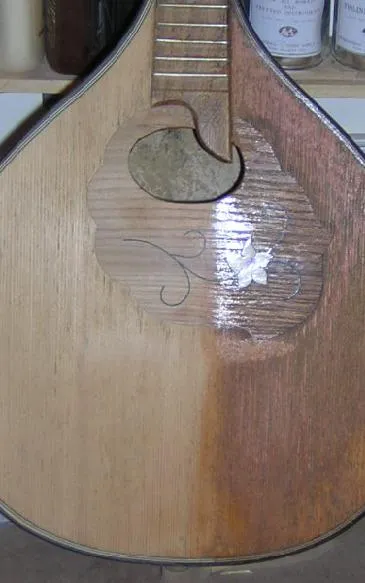 |
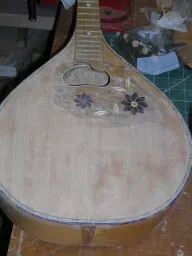 |
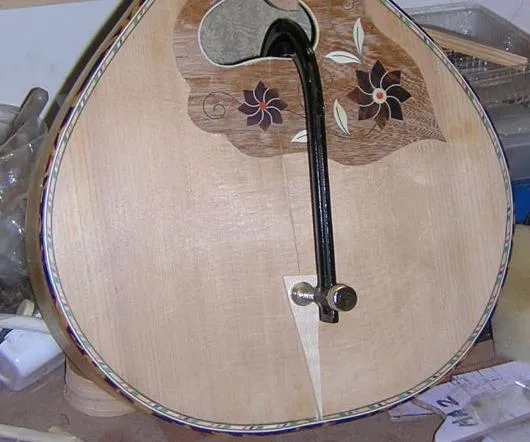 |
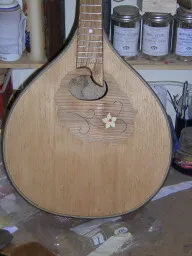 |
| NB. I will admit, having done so many now, to using an orbital sander as a first line of attack sometimes, especially on some of the German instruments with very thick, durable varnish, but I only do so after a lot of experience. It is so very easy to go through the varnish and down into the wood, which is already quite thin, so extreme caution if you do decide this is an easier way to proceed. | |||